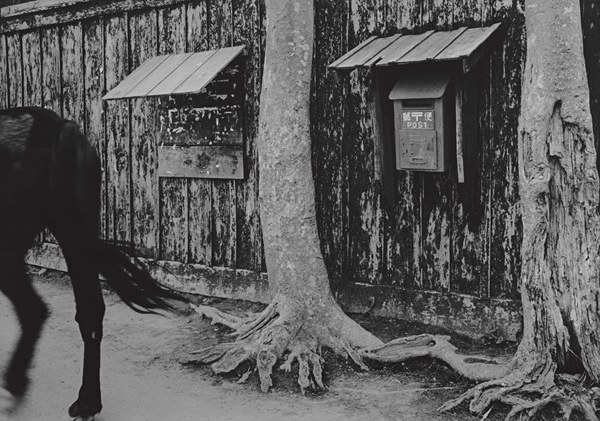
Wooden Wall, Oiwake, Akita, 1953 © Naoko Kimura
Ihei Kimura — Living in Photography
50 Years after His Death
Mar. 16—May. 12, 2024
- Mar. 16—May. 12, 2024
- Closed Mondays (except when Monday falls on a holiday, in which case the museum is open and closed the following day)
- Admission:Adults ¥1,200 / College Students, Over 65 ¥1,000 / High School and Junior High School Students ¥800
In commemoration of the 50th anniversary of his death, this exhibit features the work of Ihei Kimura (1901–1974), a photographer who made significant contributions to the history of Japanese photography. Kimura was one of the first to recognize the potential of newly developed compact, 35mm-format cameras for photographic expression, cameras that were just beginning practical use in the 1920s. Kimura established his reputation with portraits of literary figures and quick snapshots of everyday scenes in old neighborhoods of Tokyo, making use of these cameras. At the Portrait Photography of Literary Figures with the Leica Camera, his first solo exhibition, held in 1933, Kimura established his own unique style of capturing spontaneous reactions from his subjects, rather than traditional portraiture. In 1936, he visited Okinawa for the first time and recorded the everyday life of the people there, capturing the essence of daily living. This helped establish his reputation as a “master of the Leica camera.”
A prolific photographer, Kimura left behind many masterpieces capturing a wide range of subjects. These include advertising and promotional photos, photos of kabuki and other theatrical performances, works created with color film during his stay in Europe, and a series of photos on the theme of rural villages in Akita Prefecture. His outstanding camerawork and deep understanding of photographic equipment and photo-sensitized materials are backed by his strong curiosity and rich experiences. He was aware of the social function of photography to convey images of human activity through print media and positioned himself as a photojournalist. His photographic expression, which is characterized by a distinctive perspective, is unique and will continue to live on in the memories of those who see it.
In commemoration of the 50th anniversary of the death of the photographer, this exhibition will be showcasing a special exhibition of prints that were recently discovered from his last solo exhibition, Journey to China (1972-1973), which was held at Nikon Salons.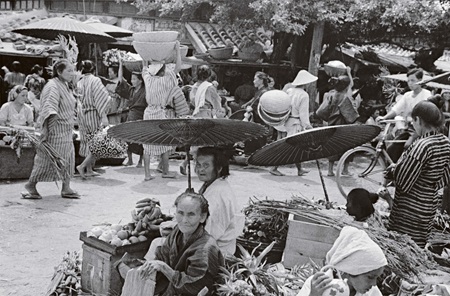
Market in Naha, Hondori Street, Okinawa, 1936 © Naoko Kimura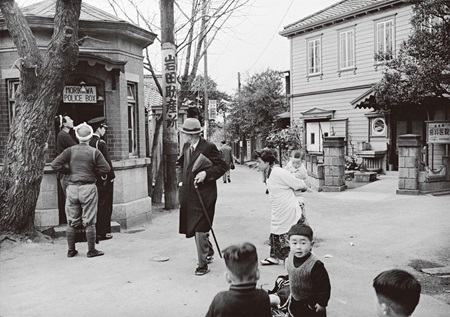
Hongo Morikawa-cho, Tokyo, 1953 © Naoko Kimura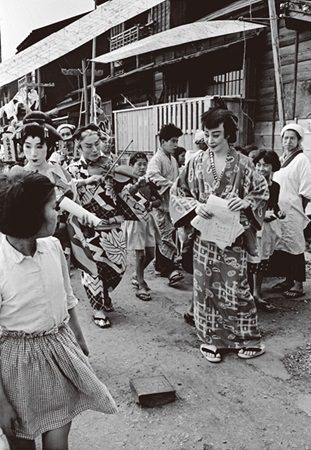
Actors on the Street, Tsukudajima, Tokyo, 1953 © Naoko Kimura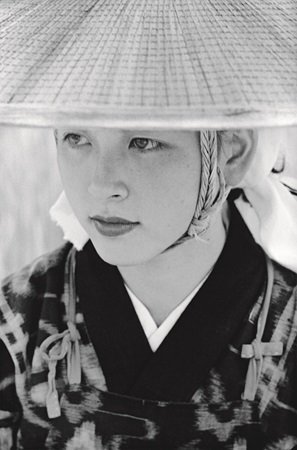
Akita Obako (Young Woman of Akita), Omagari, Akita, 1953 © Naoko Kimura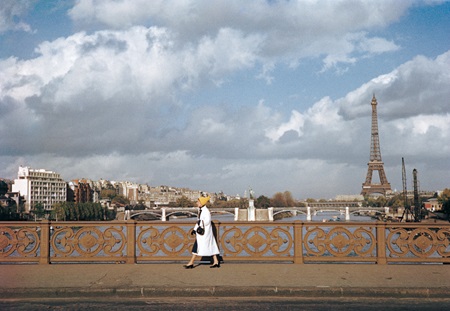
Pont Mirabeau, Paris, 1955 © Naoko Kimura
Ihei Kimura (1901–1974)
Born in 1901 in Shitaya, Tokyo, Japan, to a family of kumihimo weavers (a traditional Japanese braiding process). He became interested in photography as a child, and although he attended Keika Commercial School, he also spent time at yose (vaudeville) theaters and geisha houses while pursuing his passion for photography. After graduating, he worked for a sugar wholesaler's branch office in Taiwan. There, he also frequented a photo studio near his workplace and learned the techniques of commercial photography. In 1922, he returned to Tokyo and joined an amateur photography club. In 1924, he opened his own home studio. In 1929, he began working as a professional photographer in the advertising department of soap manufacturer Kao. In 1931, he was profoundly influenced by the German international touring exhibition, Film und Foto (FiFo) held in Tokyo, and became convinced of the expressive power of realism in photography. He made a name for himself with his snapshots of Tokyo's old neighborhoods, published in the magazine Koga, and with his exhibition Portrait Photography of Literary Figures with the Leica Camera. He subsequently became known as a master of the Leica camera. In 1950, he became the first chairman of the Japan Professional Photographers Society. He also promoted the movement of realism photography as an instructor for amateurs, along with Ken Domon. He passed away in 1974.
Inquiries: Crevis Inc.
info@crevis.jp
*The schedule is subject to change. Any further changes will be announced.
*The exhibition has been changed from the "Henri Cartier-Bresson" scheduled for the same period.
Co-organized by Tokyo Photographic Art Museum operated by Tokyo Metropolitan Foundation for History and Culture
Sponsored by NIKON CORPORATION, Nikon Imaging Japan Inc.
Patronage by Japan Professional Photographers Society

